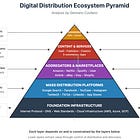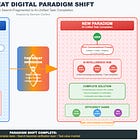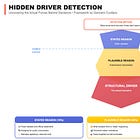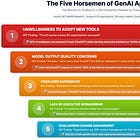This Week In AI Business: The Dual Path to AI Adoption [Week #38-2025]
The most profound technological shifts often reveal themselves not through grand proclamations, but through patterns hidden in data.
As we analyzed over 130,000 interactions across Claude AI and API platforms during August 2025, a striking reality emerged: organizations aren't adopting AI along a single trajectory, but rather splitting into two fundamentally different paths that reflect competing philosophies about the role of artificial intelligence in work.
This divergence isn't merely technical—it's behavioral, cultural, and strategic. The data reveals that Claude AI users spend 47% of their time in exploratory behaviors, iterating, learning, and refining, while API users demonstrate 76% automated, directive patterns with minimal human intervention.
This isn't a story about which platform is superior; it's about understanding how different adoption patterns predict success or failure in the AI transformation journey.
The Great Divergence: Two Philosophies of AI Adoption
Top Latest Issues:
The weekly newsletter is in the spirit of what it means to be a Business Engineer:
We always want to ask three core questions:
What’s the shape of the underlying technology that connects the value prop to its product?
What’s the shape of the underlying business that connects the value prop to its distribution?
How does the business survive in the short term while adhering to its long-term vision through transitional business modeling and market dynamics?
These non-linear analyses aim to isolate the short-term buzz and noise, identify the signal, and ensure that the short-term and the long-term can be reconciled.





![This Week In AI Business: AI Technology Bubble Analysis [Week #35-2025]](https://substackcdn.com/image/fetch/$s_!pkd2!,w_140,h_140,c_fill,f_auto,q_auto:good,fl_progressive:steep,g_auto/https%3A%2F%2Fsubstack-post-media.s3.amazonaws.com%2Fpublic%2Fimages%2Fc6d426bc-a100-44fb-b159-47c64a21662f_1290x1332.png)



